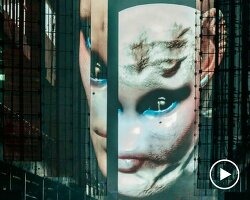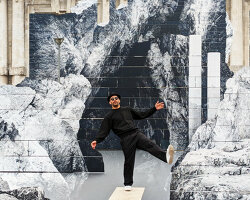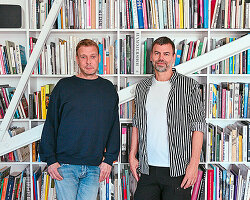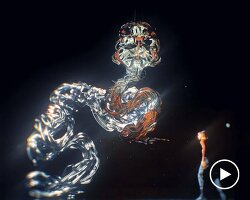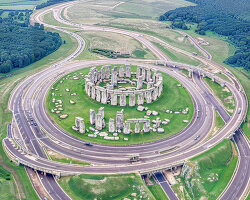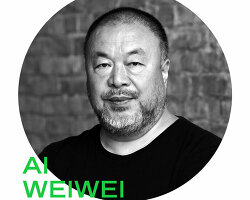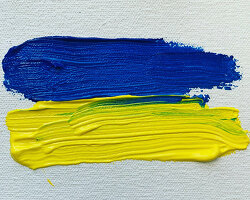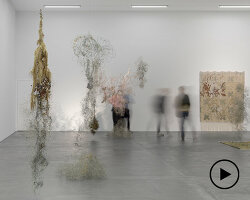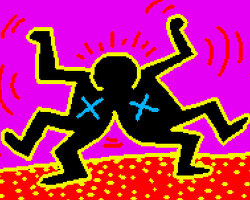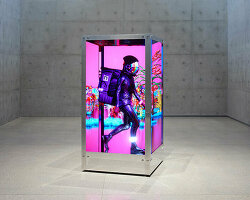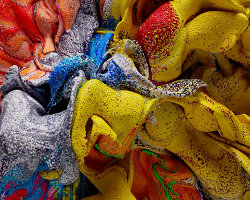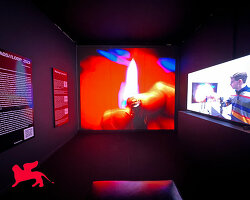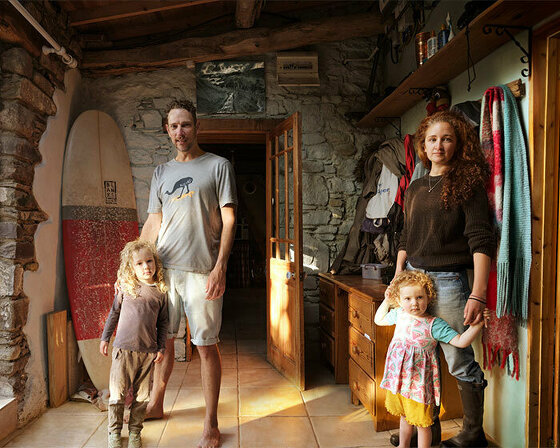‘it’s a brush, it’s a tool’ — johannes gees on nfts
swiss artist johannes gees has been working with NFTs long before most of us even heard the term ‘non-fungible token‘. fascinated by new technologies and their potential, gees has been exploring both digital and physical spaces since 1999. in 2019, he created his first NFT named ‘proof of destruction’. in that same year, the artist collaborated with kelian maissen on a collection of 360 NFTs called ‘kleee02’, a laser platform that references a famous paul klee quote,‘a line is a dot that went for a walk’.
at the 2022 edition of engadin art talks (E.A.T.) johannes gees was in conversation with gallerist nina roehrs to discuss the artist’s kleee02 NFT projection. designboom also caught up with gees during the weekend-long art event in switzerland to examine the evolution of digital art and how NFTs are changing the game for artists. read the full interview below.
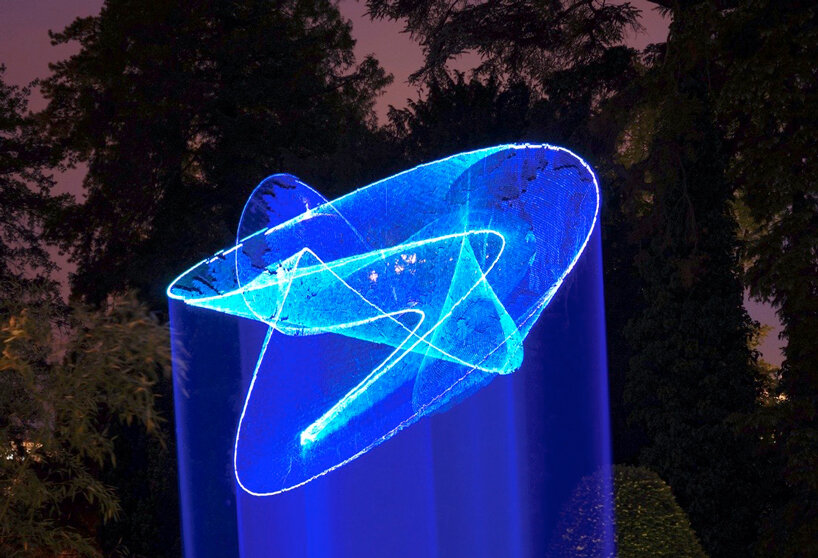
kleee02 NFT laser projection at villa diana, zurich, 2019
designboom x johannes gees interview
designboom (DB): what is the focus of your talk at engadin? what themes and topics will you present?
johannes gees (JG): I will talk with nina roehrs, a gallerist from zurich who has specialized in digital art for the past couple of years. I will talk with her about one of my projects, which is called kleee02. it is what you’d call an NFT project. I got into that blockchain space five or six years ago. I was fascinated by these new concepts. I forgot to invest myself, just didn’t think about it, but I was very interested in this new concept of decentralization, and new money. then came smart contracts and you could build complicated relationships. and so, I was really interested in it. then about three or four years ago, I teamed up with a fellow artist, his name is kelian maissen. he’s much younger than I, a different generation, but we shared the same interest in this space that was evolving. I first hired him to redo a work of mine, an LED installation in a public place in zurich and then we found out that we have the same ideas, that we like this NFT thing, which was not called ‘NFT’ at that time three years ago.
DB: what was it called?
JG: I just checked our website, and we always talked about ‘the token’, not ‘NFT’. we thought nobody would understand ‘non-fungible’.
JG: we developed this project in the winter of 2019. we were intrigued by the similarity of smart contracts and the certificates that were used by conceptual artists in the 50s and 60s. this was one reference. the second reference was paul klee, because we developed this kleee project for a laser platform that I built with some other artists two or three years before that, and there is this famous quote from paul klee, ‘a line is a dot that went for a walk’, which is basically the description of how a laser works. so this is where the name comes from. we put everything into that NFT project and then we launched it in april ’19. we sold a couple of NFTs to our friends and I kind of forgot about it, and then there was the whole pandemic.
DB: have you worked with NFTs since then?
JG: we didn’t do a second project at that time but then about three months ago, collectors found it. I always knew that we were very early. we kind of coined a new way of how you can do art projects and we were at the forefront of what happened now over the last 18 months. our project, together with another project, is really like the pioneer project. so this is why our NFTs all of a sudden became very expensive and collected by a lot of people.
DB: why do you think artists are now moving to NFTs? do you see any negative aspects?
JG: well, maybe I can give you an example. I’ve been working as a digital artist for almost 22 years and I never had access to the art market. I had quite a lot of success, I worked all over but I didn’t have access to galleries who were just not interested. why? because you cannot sell digital art. in my eyes, what is happening now, is that we have been living in digital space for 30-40 years. but art is still like painting, it’s maybe a little photography, a little sculpture, that’s it. now what is happening is that all of a sudden, digital art becomes something of value. and to me, this is really really really great. then, of course, there’s other stuff like as an artist, you can bring your NFTs on to a secondary market, which is like opensea or other platforms, and you get royalties, which, I say, is like the wet dream of every artist. every time your work is resold, you get a small share. so there are a lot of advantages.
JG: disadvantages… I don’t know. I mean, we have this environmental issue and it’s a very immature market, there is fraud, there’s everything.
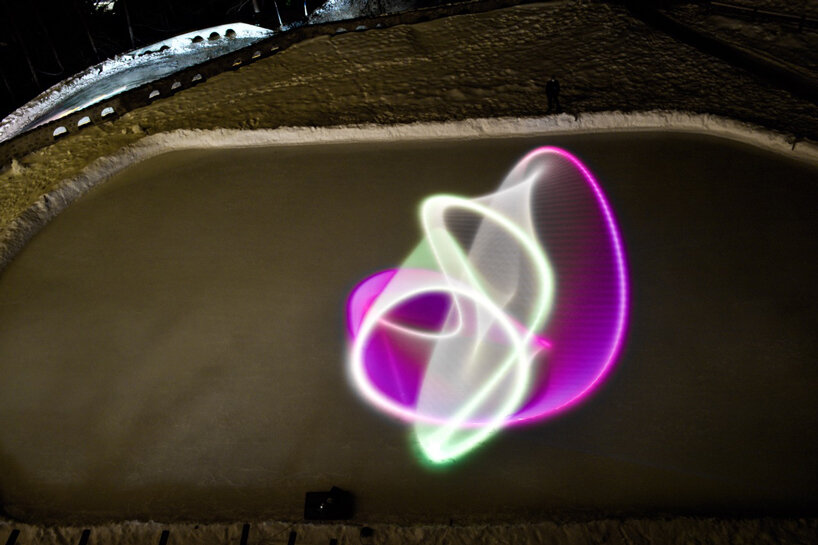
kleee02 NFT laser projection during E.A.T.
DB: then museums in the digital world will buy digital art?
JG: yeah, but then the way it is presented looks awful because it’s all happening so fast. a lot of NFT creators, they’re like kids that started a year ago, because they made some money and now you have these two worlds, which are kind of out of synchronization because there’s so much new money. the other day I heard the introduction for an online event organized by an art organization from new york. the curator said, ‘I’ve been a curator for 20 years and for each and every exhibition, each and every project I did, I had to fight to get the funding but now I’m confronted with 20-somethings that throw around billions’. and this is crazy, absolutely crazy but it’s just a change that’s coming.
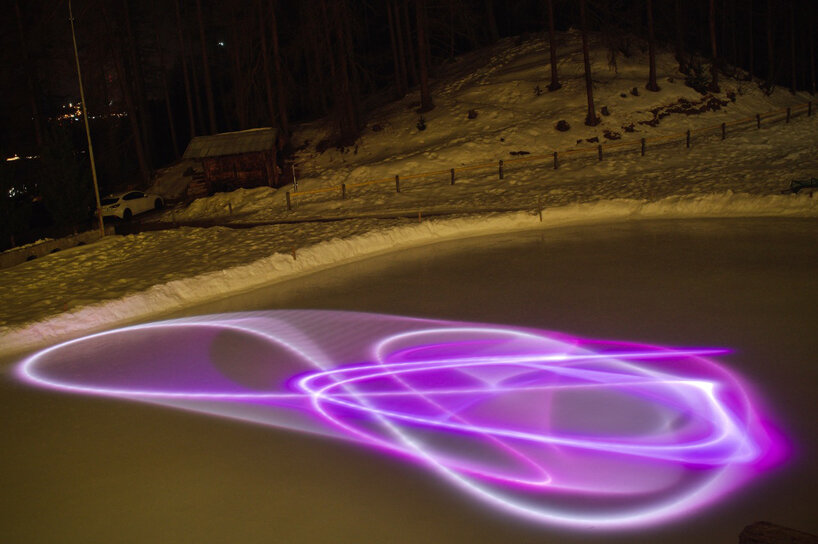
kleee02 NFT laser projection during E.A.T.
DB: what do you think about having real-life artwork and then having the digital NFT version too? that seems to be the recipe at the moment.
JG: I don’t know. I’m very critical. I mean, I don’t mind but I’m not sure if it’s going to work. of course, you can build a market infrastructure for classical art, like paintings and photography.
DB: so maybe we can buy a botticelli?
JG: maybe! I don’t know enough. that’s another thing, the whole digitalization of art, I don’t understand. I think it’s something that is just driven by speculation. like last summer, you could do anything and say it’s an NFT, and then you would sell it.
DB: but you still have to sell it, it’s not so easy.
JG: I mean, everything was picked up, there was so much money around… so I’m not really sure. if I was a contemporary artist doing physical work, would I sell it as an NFT? I don’t know.
JG (continued): I did another NFT exactly three years ago. I was in sri lanka, and it was called ‘proof of destruction’. I was on the beach not working and so I did a painting then I took a picture of it, I digitized it and then I uploaded it on the blockchain, made the certificate, and then I destroyed the painting. I took it into the ocean and washed it away.
JG: for me, this was a conceptual approach toward this question of what is the relationship between physical art and a certificate. I said, okay, either one can exist but not both. in blockchain, everything is about automatization and writing, if this happened, stand back, and so on. and when you say okay, this is like a painting and the value is in this certificate NFT on the blockchain, yeah, but this still has a life of its own. you cannot control what’s going to happen. so maybe the NFT is resold, and the owner keeps it then you end up with a mess, you know? my take on the whole blockchain thing is that, and I’ve seen a lot, I’ve seen so many projects, and I think it’s mostly for digital space. it’s for digital projects for digital whatever.. it stays digital works, and everything else is really difficult.
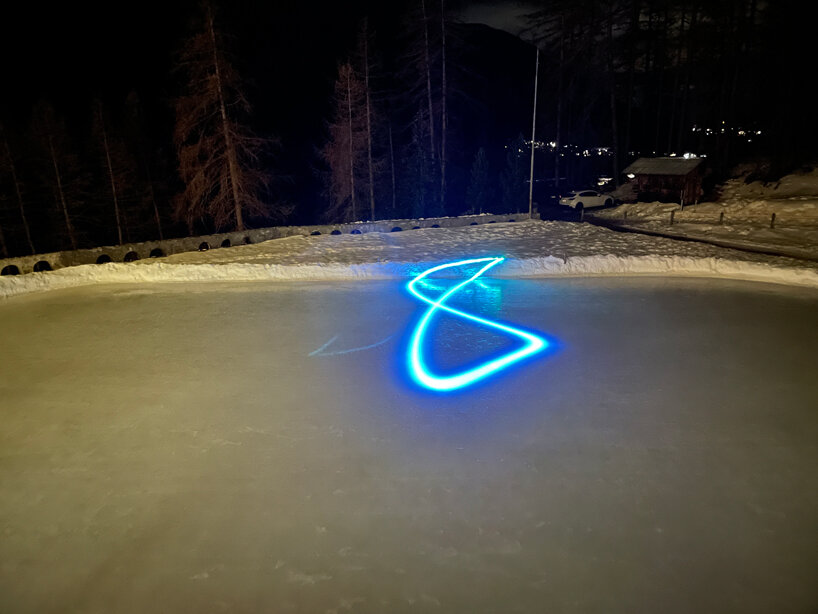
image © designboom
DB: do you think there’s space for artistic contemplation in NTFs?
JG: I think that technology can become a theme for an artist, you contemplate a new technology. you know, like nam june paik’s ‘magnet TV’. at the moment, we think a lot about, okay, what is an NFT? what is this whole technology? what can you do with it? but, in the end, it’s about value, it’s about proof of ownership, it’s about market. it’s a brush, it’s a tool. one will say I do political work on it, the other will do, I don’t know, just eye candy. so, yeah, maybe for another year or two, I think it’s still interesting to see where are the boundaries and how can you hack it. we just did a work that kind of hacks the whole thing. everybody will tell you, only one person can own an NFT and you can always sell it. we built an NFT that everybody can own and nobody can sell.
DB: what do you think about beeple?
JG: I think beeple never thought of himself as an artist. and also the projects before him, the big projects like cryptopunks, they never said they were artists. everybody this year talked about NFTs as art, but actually like 90% of NFTs have nothing to do with art. nobody claimed that it’s art.
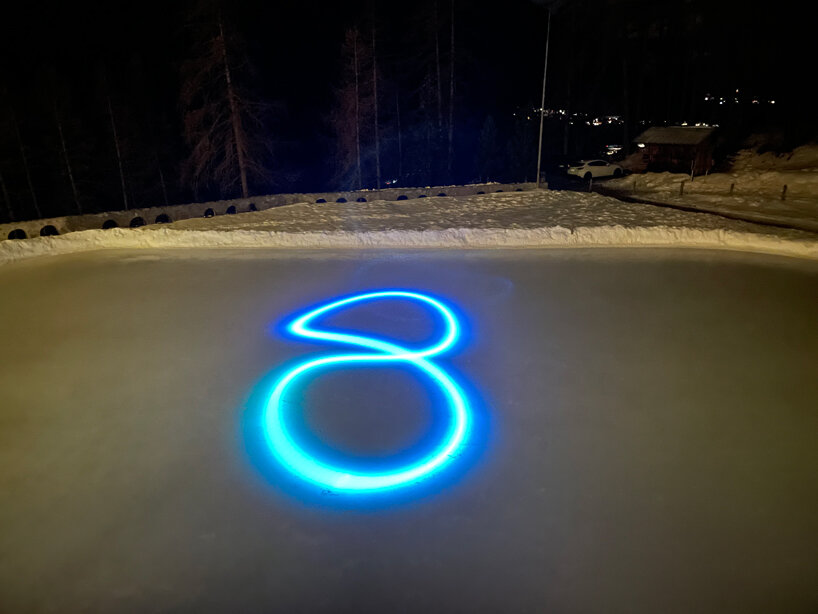
image © designboom
DB: because many of those buyers maybe don’t have an art background, which is not good or bad, it’s just a different kind of audience.
JG: absolutely. for example, in my community, we have like 160-170 collectors that hold our tokens or NFTs of the kleee project and we’re in contact with them through discord. there’s quite a handful of people, I would say, who are very aware of what we do and they see the conceptual side of it and also the historical interest in it because we were kind of early with the whole project. there are those people but what I also see is that they’re not very art history aware, they don’t know much about art but they’re interested and they want to learn.
JG: to come back about the relationship between NFTs and art, with every technology that came up, you had some new possibilities, like with printing and photography where you can do editions. and it’s also interesting, what you can do with NFTs, which can have an influence on how you do art. it introduces some interesting concepts of validation and distribution, and that’s really fun. it makes a lot of sense. I can give you an example, as an artist I do an artwork and then I sell it as expensively as possible because I’ll never get a second chance. and then it’s gone, it’s sold and that’s it. now, with NFTs, I can do an artwork and I can maybe do an edition of 500 or 1000. and when I’m successful, I can sell them at a very low price. I get the community who are collecting it and I make only money on the market that is evolving after that for the resale. so, thanks to the fact that I can make 1000 or 2000 or 5000, I can distribute it at a very small price. people pick it up and then the moneymaking starts. this is a whole new way of thinking about how can I operate as an artist. it can also bring down the cost of developing something and just trying it out. and the whole NFT technical standard was was developed four years ago and was deployed on the blockchain in 2018.
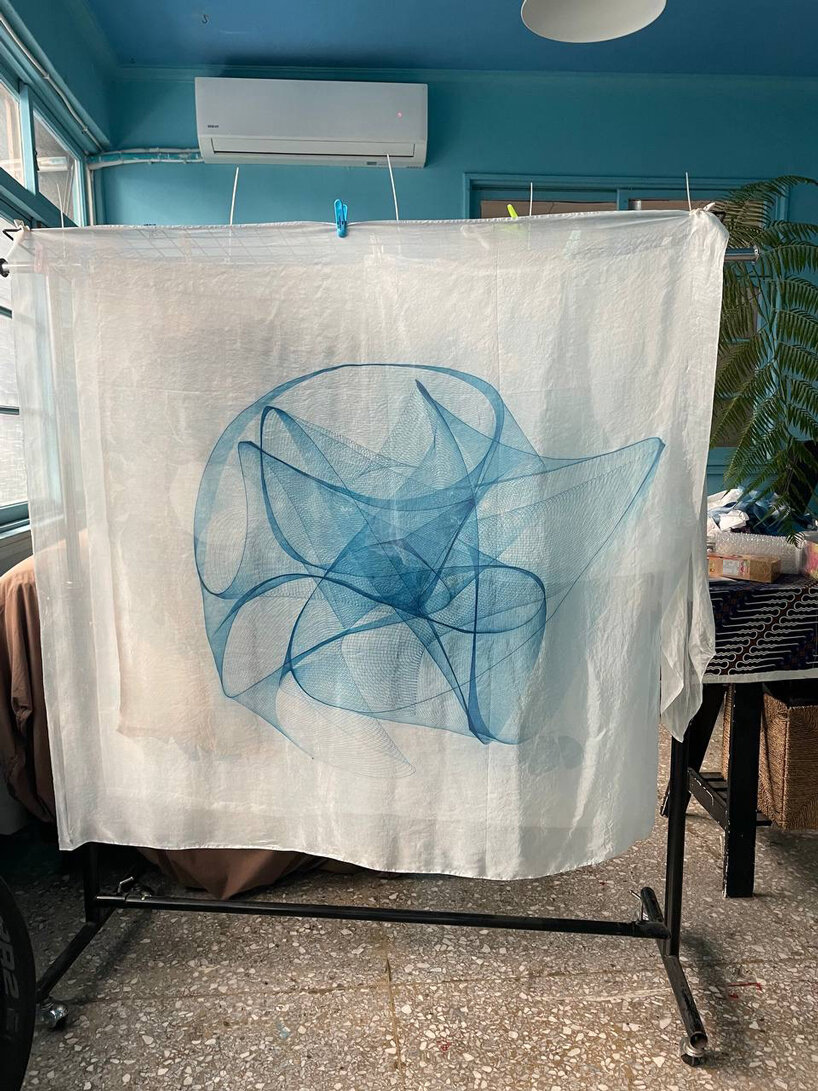
laser cyanotype of a kleee02 NFT
DB: what do you think has been responsible for the popularity of NFTs now? do you think there were one or two specific events?
JG: in 2018, we had this incredible ICO boom, when everybody brought out their own tokens and sold them. and that was about currencies and maybe ownership like shared ownership in companies. I think NFT is even more important and especially bitcoin showed that people trust in something that is only digital. and the validation is because enough people believe in it. you cannot see this without looking at social media. we have seen social media as something very valuable for some people. so, our actions, our belief in social media, it’s valid for some people, and now, it’s the same with these currencies. now, with NFTs, it’s about digital uniqueness. can something that is only digital, like an object, a drawing, or just a certificate actually, be valuable? and, obviously it can. for me, it marks something that is really very important.
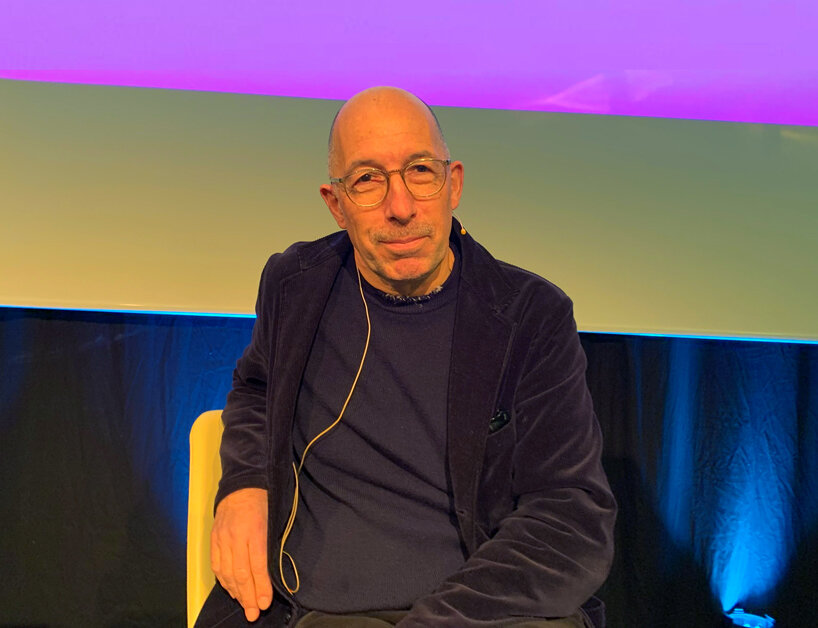
johannes gees at engadin art talks in switzerland
image © designboom
DB: are you afraid that there will be more control? for example, social media is owned by a few corporations. do you really think NFTs will be an opportunity for individuals?
JG: yes, absolutely. I really believe that.
JG: the next big thing is digital fashion, digital music NFTs, which, I mean, what is a digital music NFT? the music itself will be distributed like now, it will be streamed and everything. we’re not going back to when we were kids, and you would pay like 10 euros for a 45. we’re not going there anymore. but the whole merchandising thing and NFT is merchandising, it’s like added value if you’re really into something.
DB: and it protects the author?
JG: yes. and on top of that, you can resell it. same with games. there are so many opportunities with artists, I think. for many artists, digitalization has been a disaster, so I think it’s only right that they have a new way of selling.
DB: so your future is in NFTs?
JG: my future is in art. my future is in ideas. and as I said, I have been, of course, doing a lot of research, I have been studying, I really went down the rabbit hole, and this kleee project was really about finding out what can you do with an NFT. because at that time, there were no NFTs. what can you do with it? what is possible? so we packed everything into that project and sent it out to the world and three years later, it went through the ceiling. but I didn’t do it for the money at that time. the calculations we did three years ago were like if you sell all of them, I think we would make like maybe 100,000 euros, but basically I said nobody is ever going to pay 2 ETH for one of our NFTs. at that time, 1 ETH, etherium was 250 euros. so, in the end we ended up with a price for each NFT that was like 20 times higher, and that is just crazy.
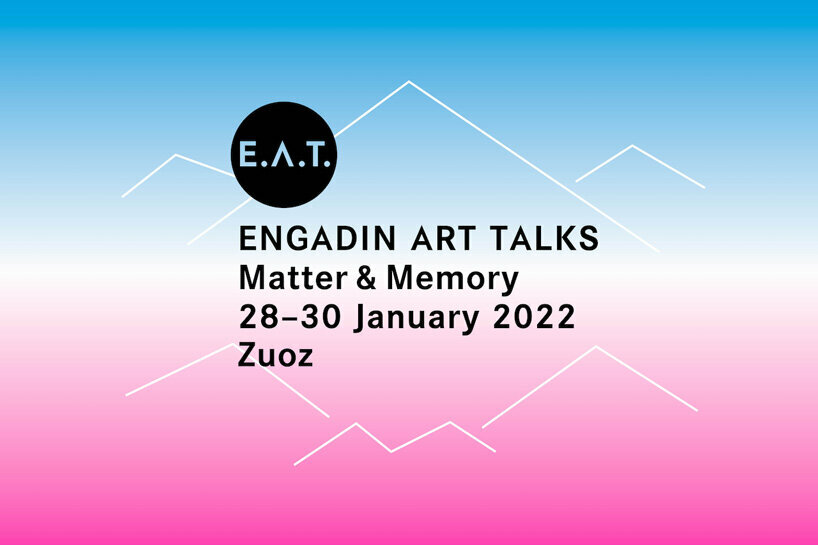
E.A.T. is internationally recognized for bringing together leading artists, architects, writers, scientists and disruptive thinkers from around the world. its mission is to provide an interdisciplinary platform for a global dialogue on the arts and different creative fields. internationally recognized for its line-up of leading artists, architects, writers, scientists, and disruptive minds from all over the world, E.A.T. has invited so far more than 140 speakers that have presented their ideas and visions on challenging social relevant themes since its inception in 2010. E.A.T. was founded by cristina bechtler together with hans ulrich obrist.
ART INTERVIEWS (122)
ENGADIN ART TALKS (E.A.T.) (23)
NFT (NON-FUNGIBLE TOKEN) (101)
PRODUCT LIBRARY
a diverse digital database that acts as a valuable guide in gaining insight and information about a product directly from the manufacturer, and serves as a rich reference point in developing a project or scheme.
